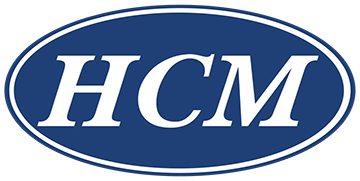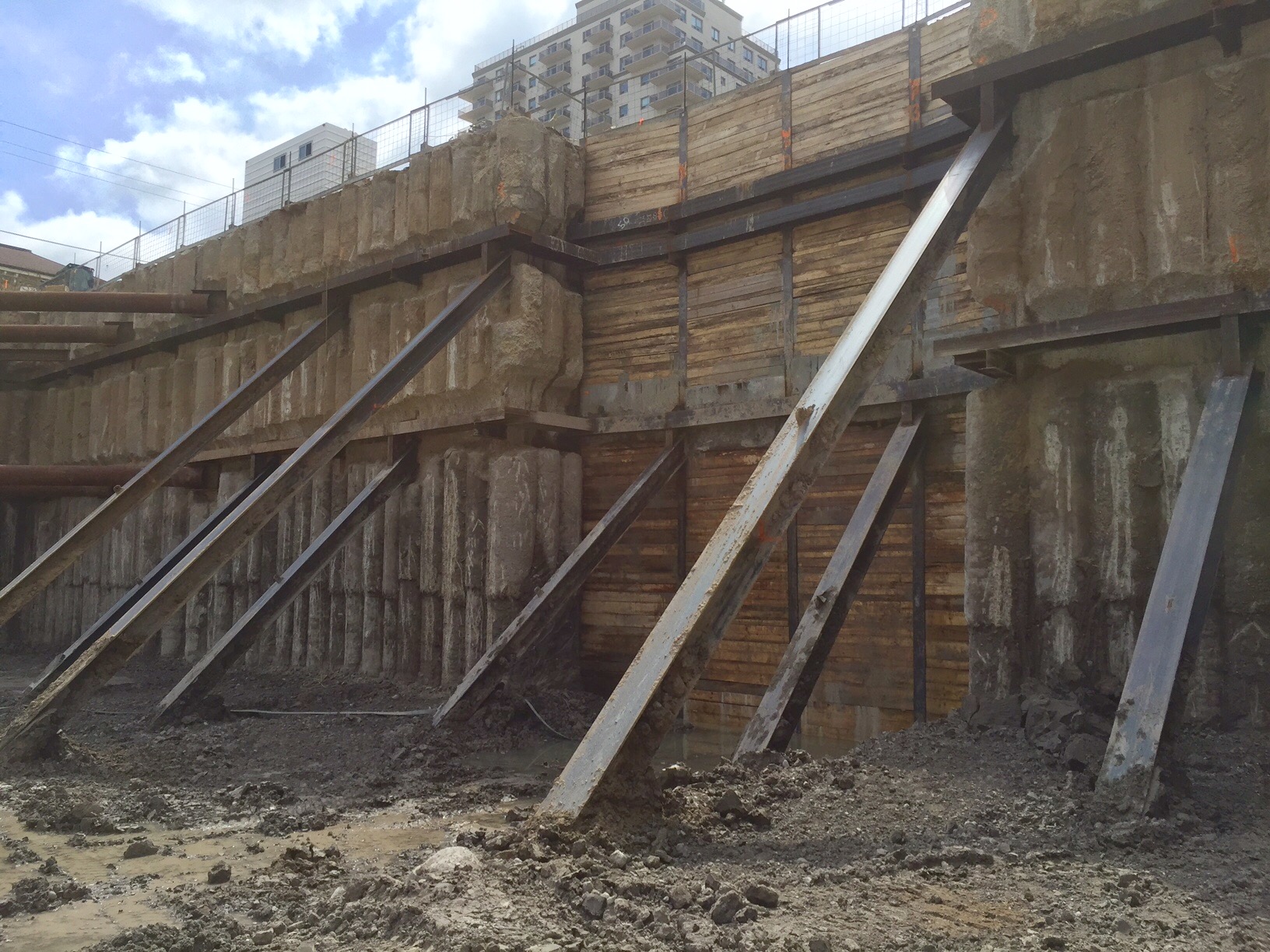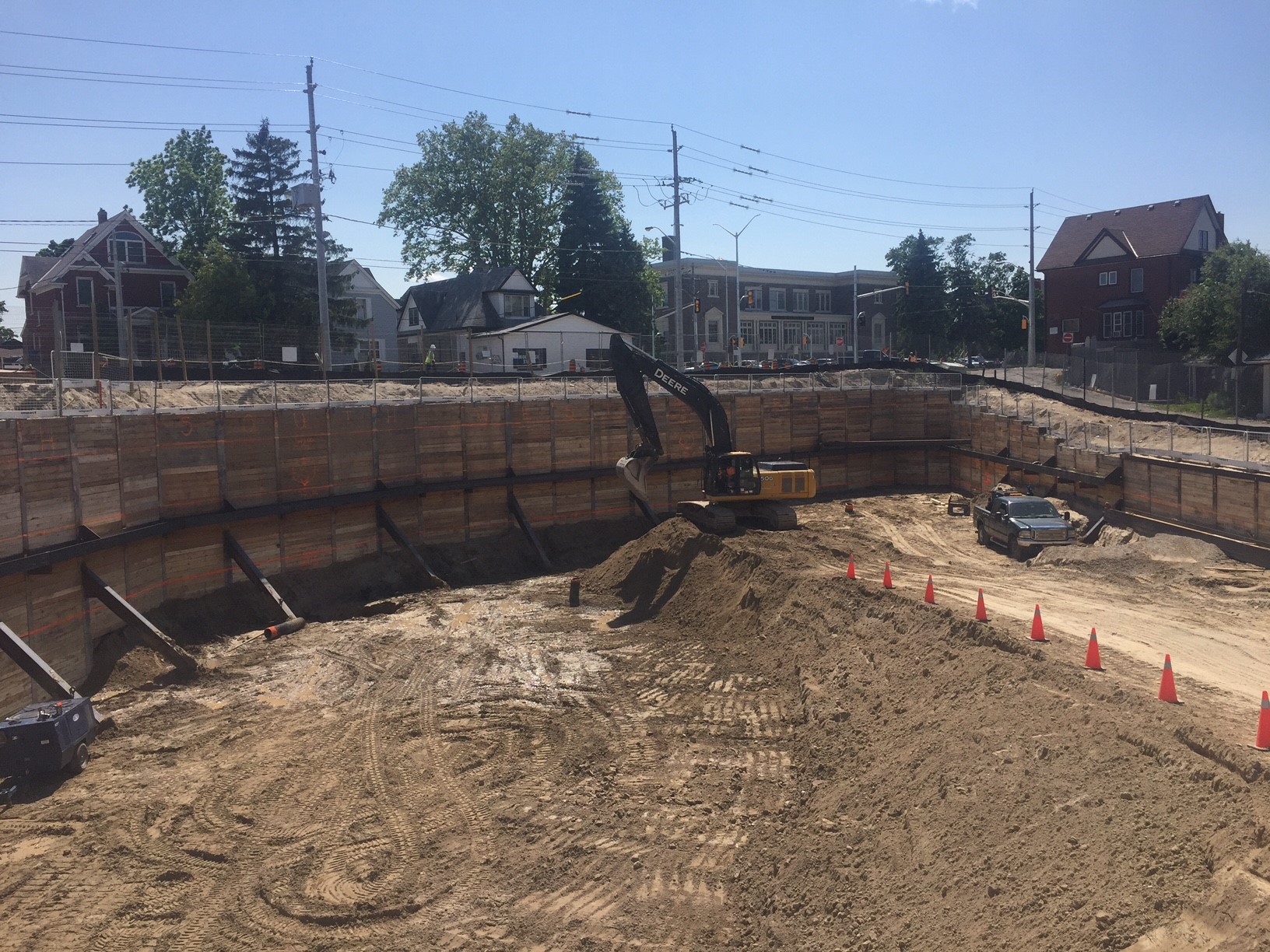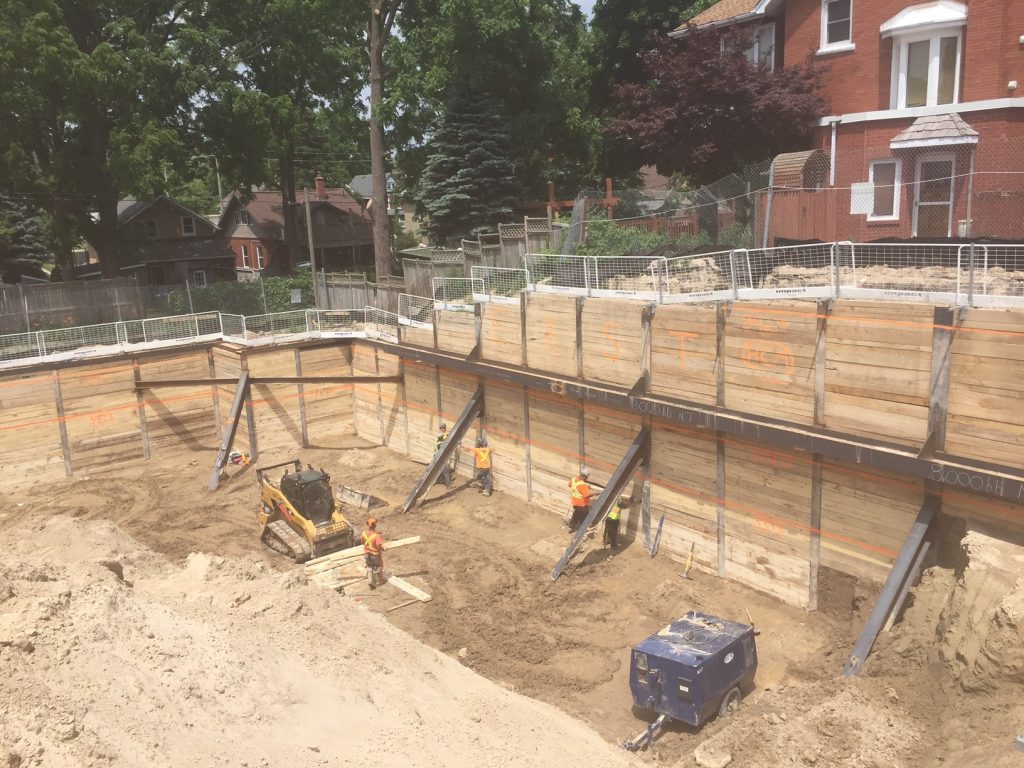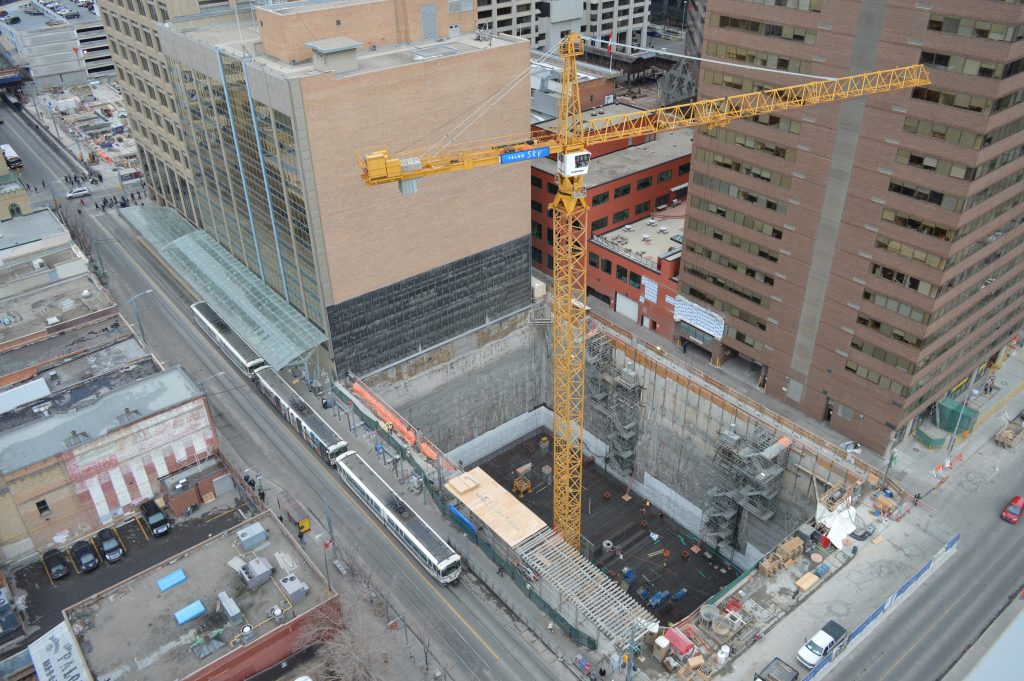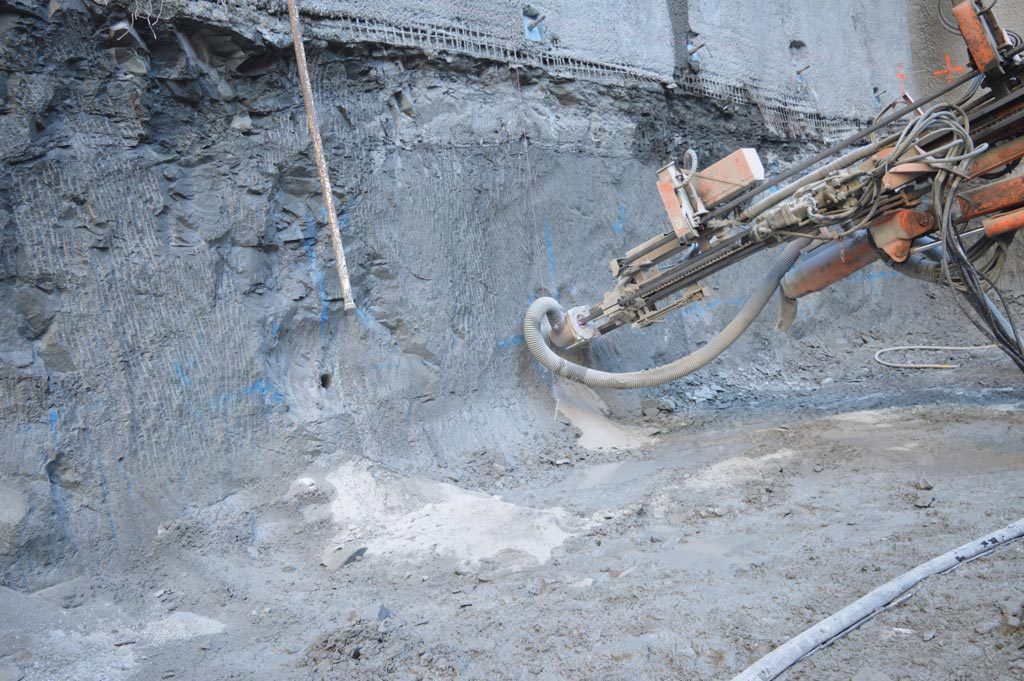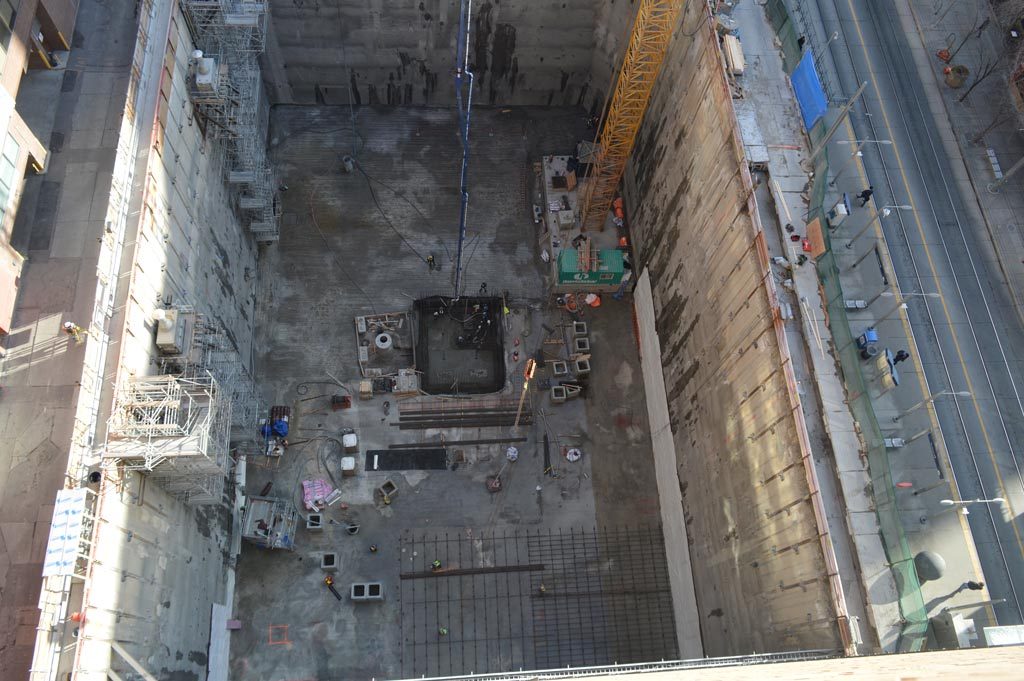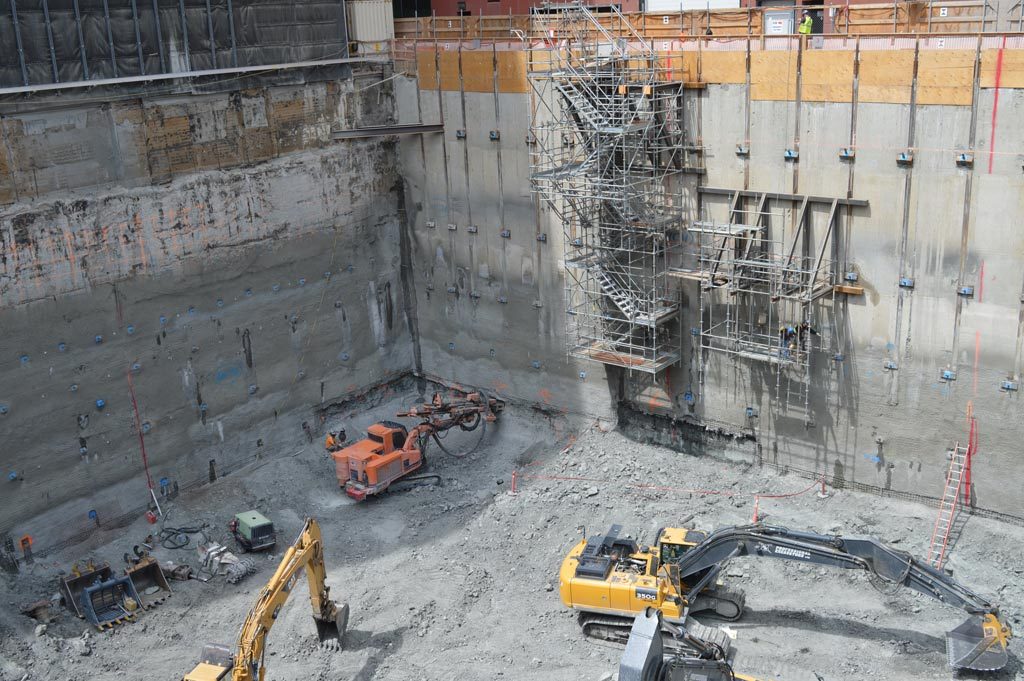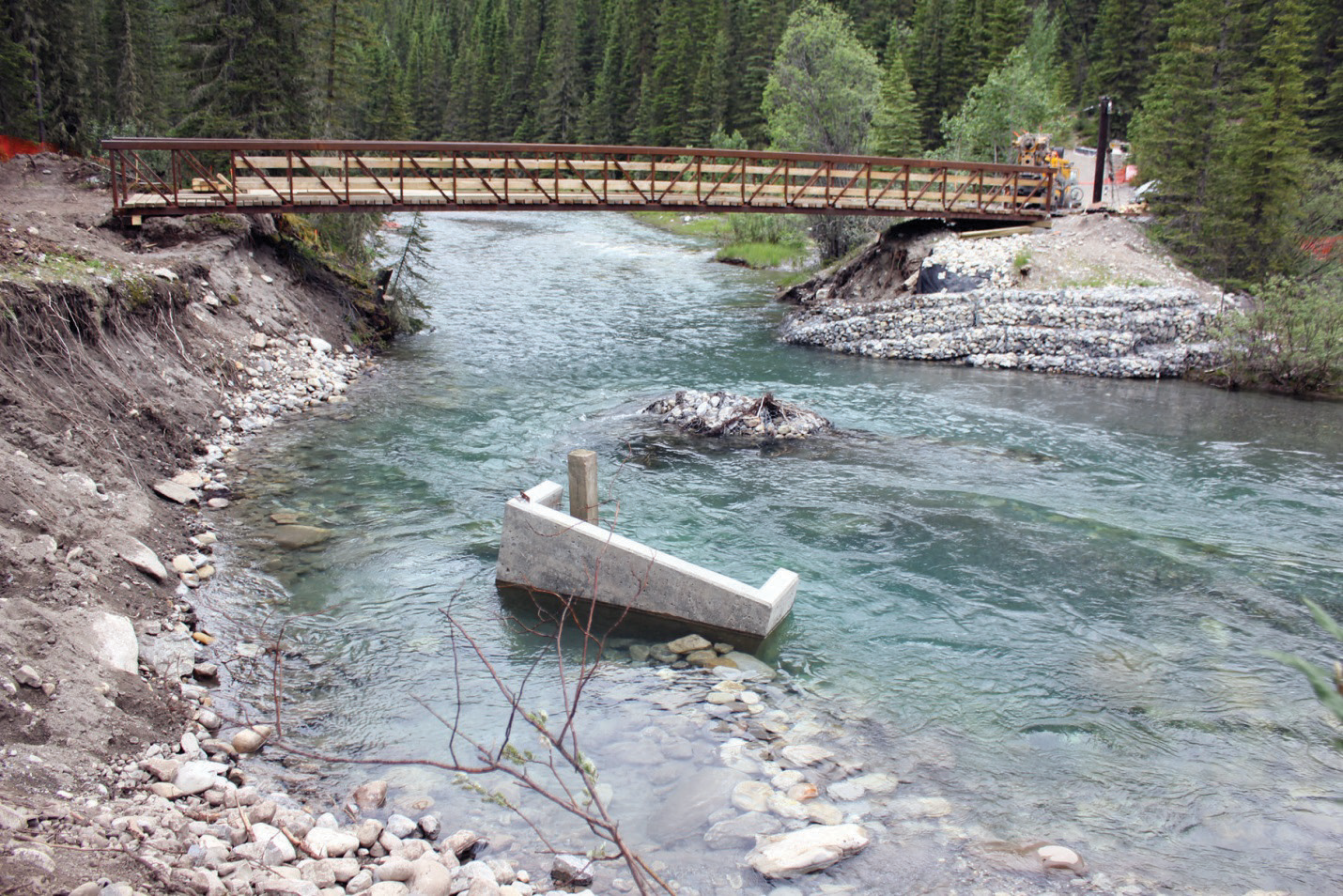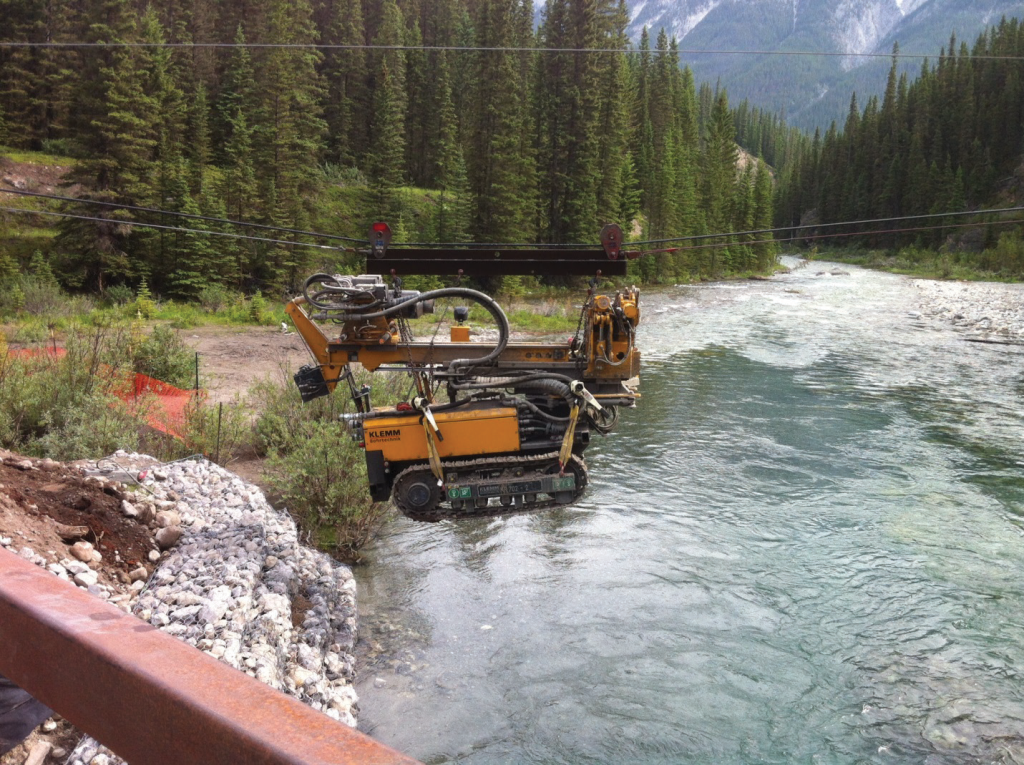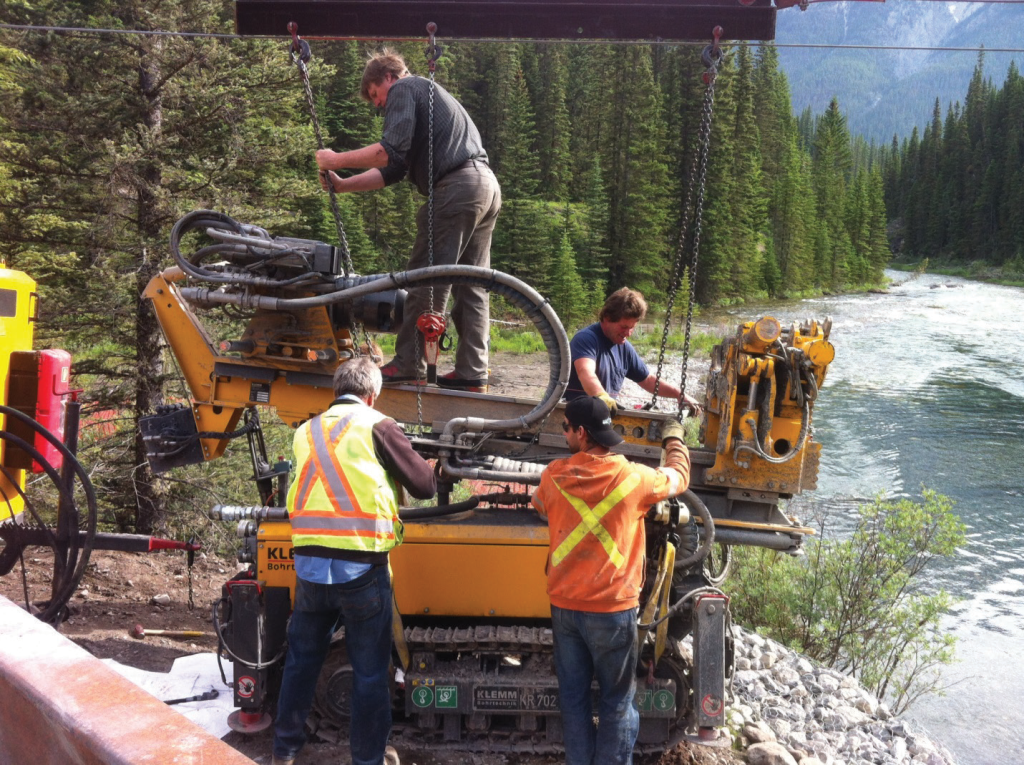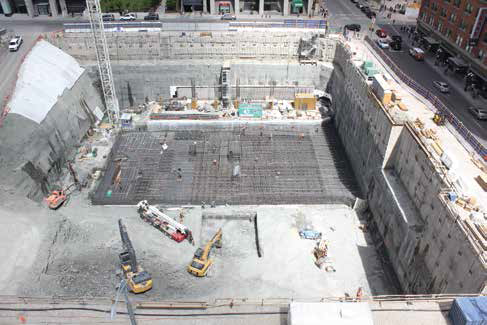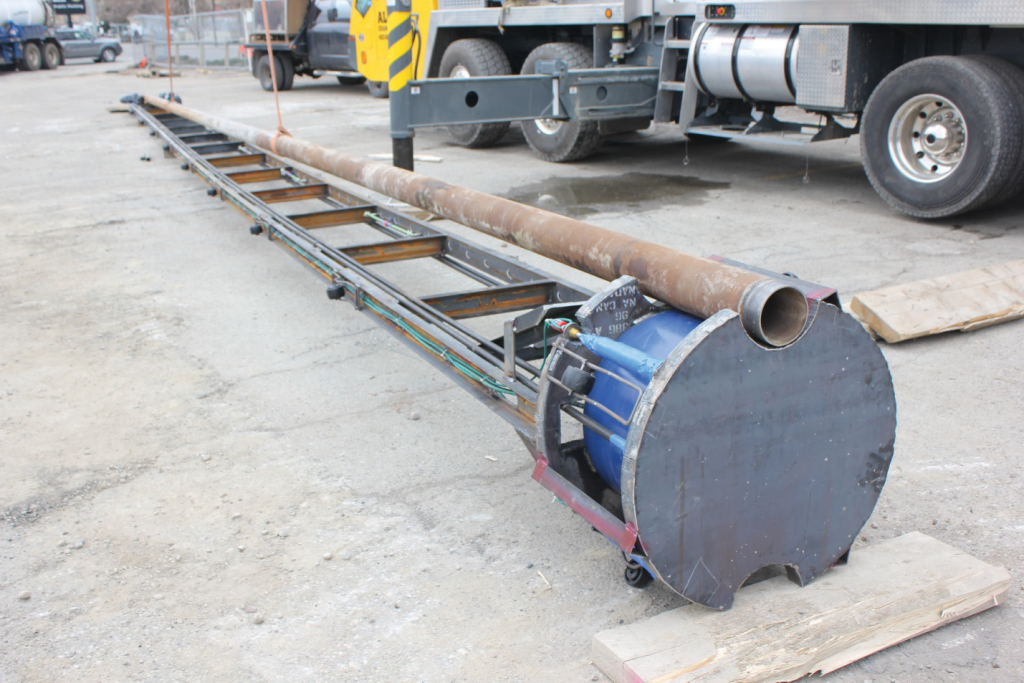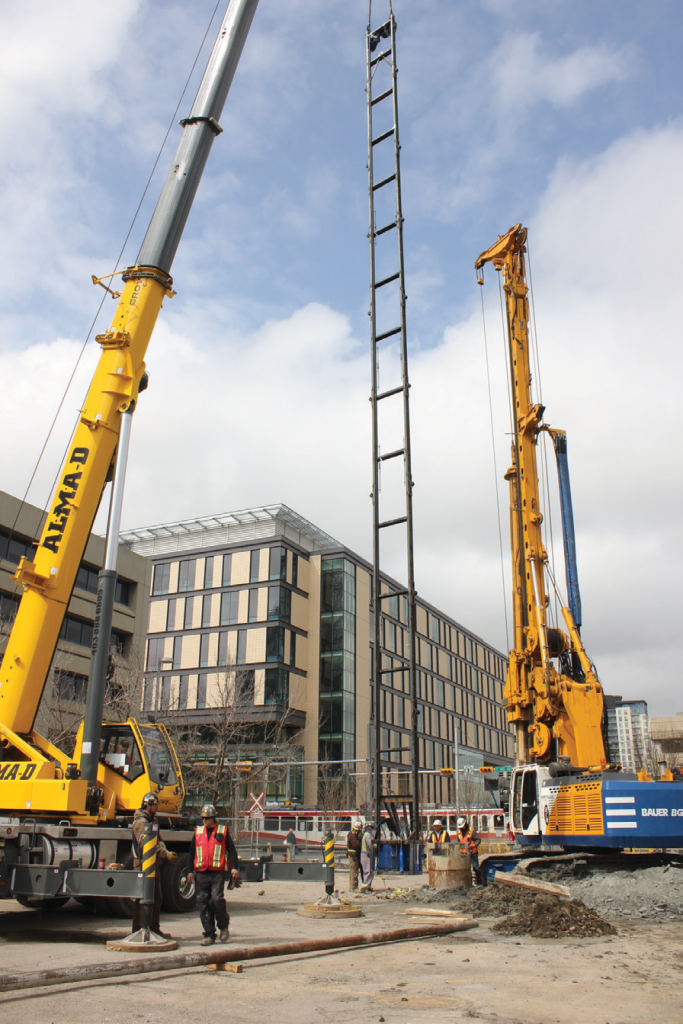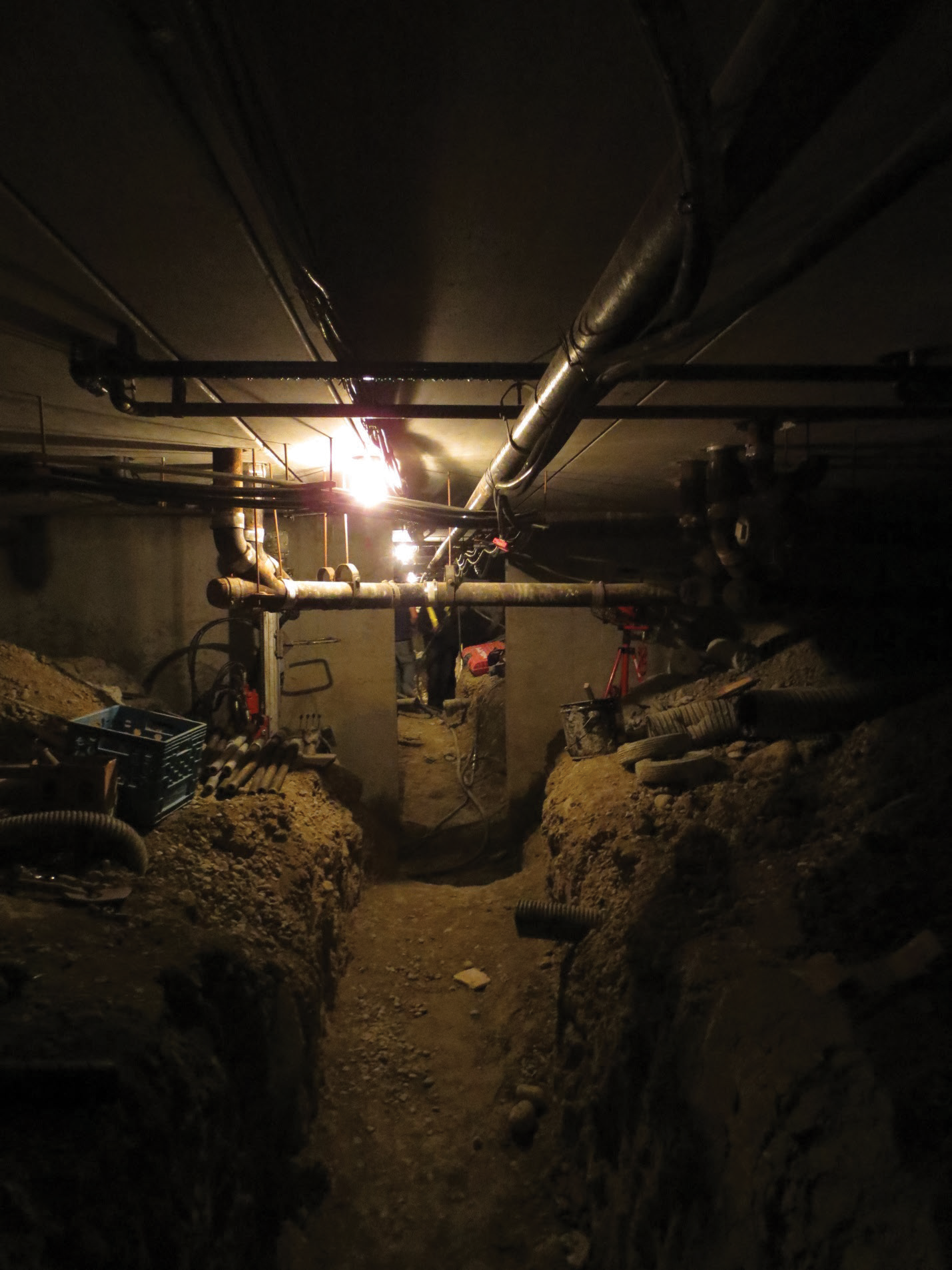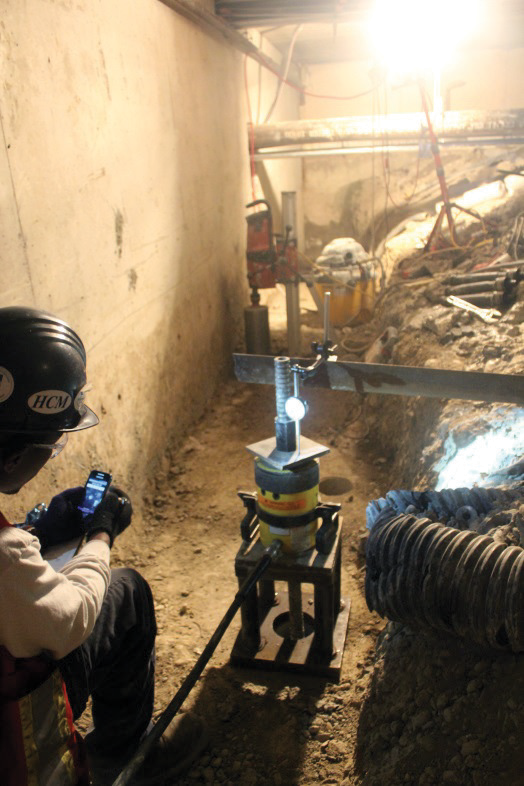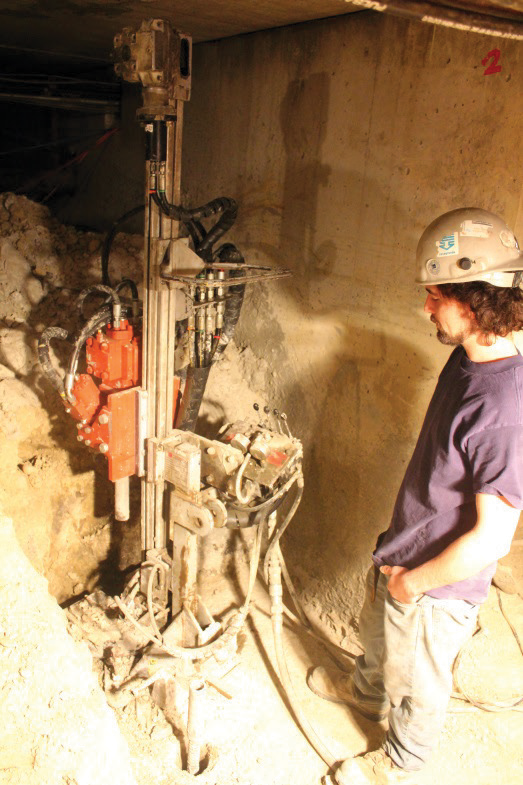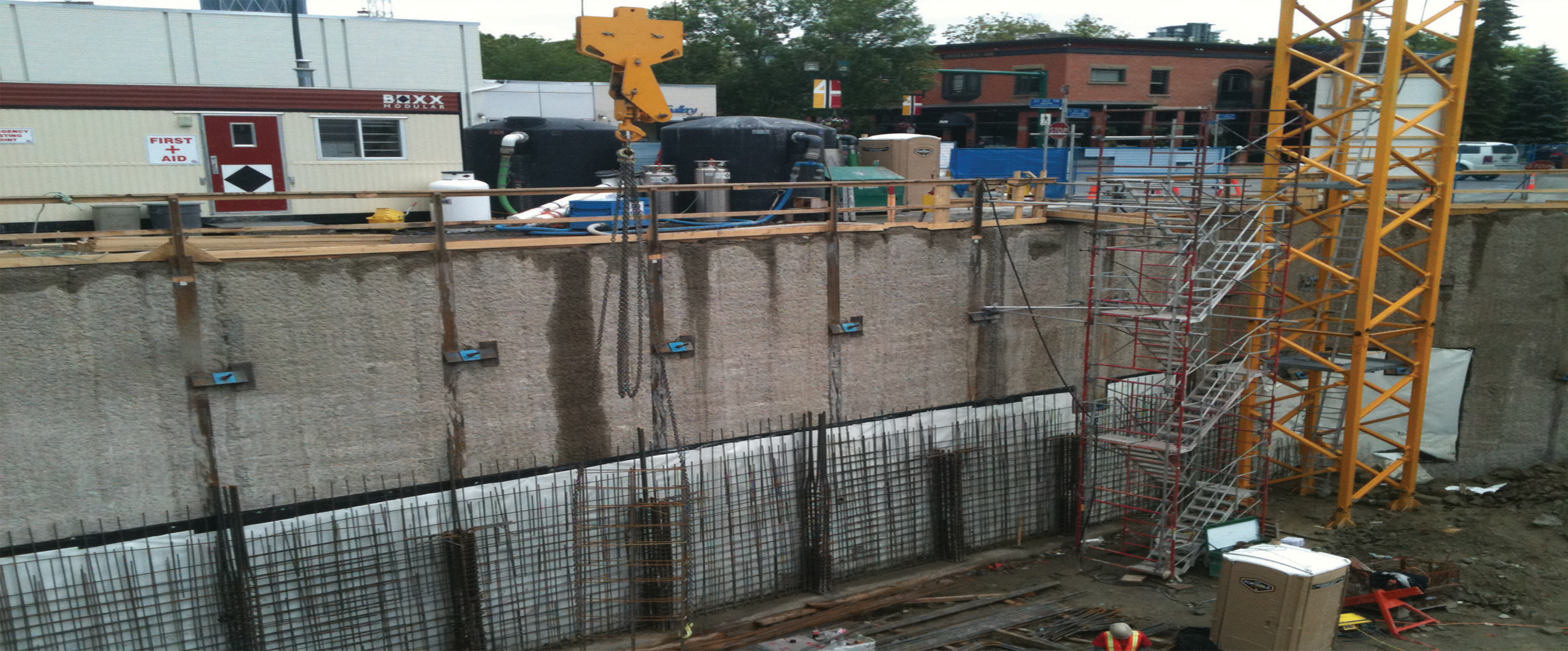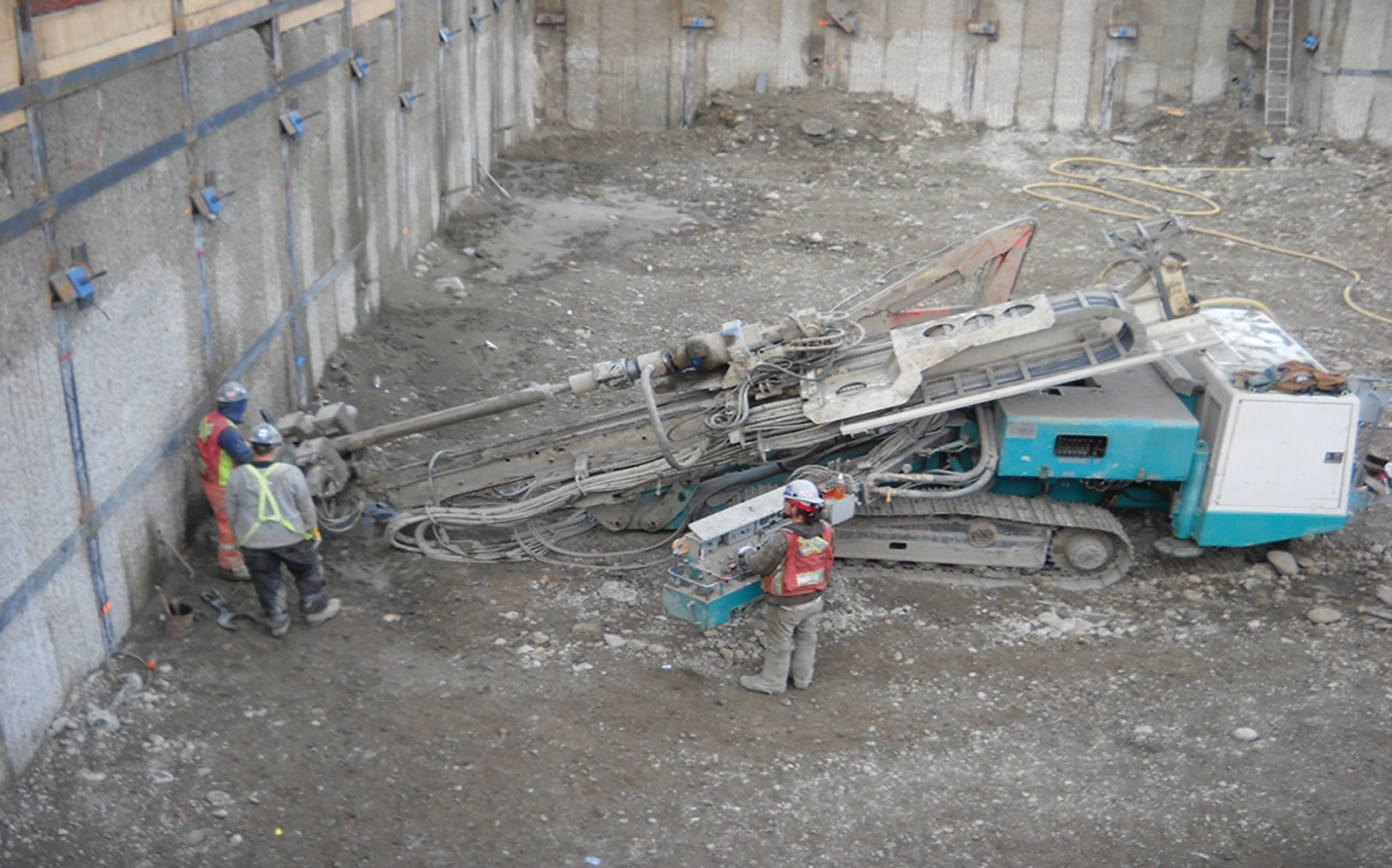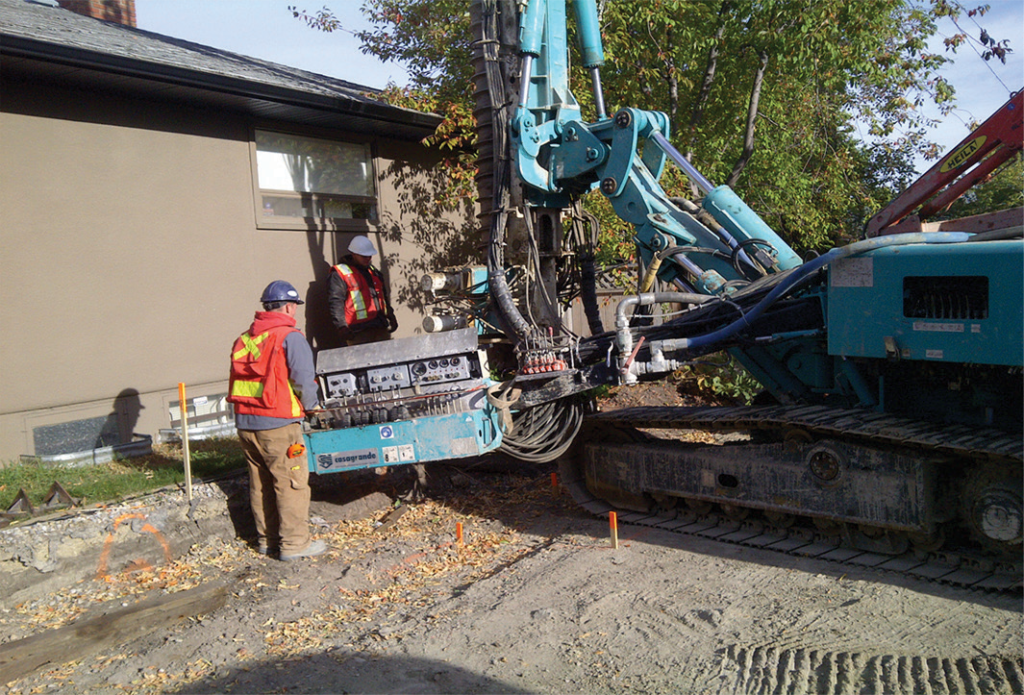Talbot Street
HCM completed the design-build shoring for the Azure condominium project in downtown London. Due to the soil conditions encountered during initial drilling, a full depth caisson wall was installed for the construction of a two storey underground parking structure.
A combination of tiebacks and internal struts were used to support the 12.0m deep excavation. After piling was complete tieback encroachment became no longer possible along the west wall and had to be converted to a double rakered system. As the foundation structure was entirely precast this presented unique challenges when using rakers. RWH worked together with HCM and the Developer to make the internal bracing system work around the precast panels and designed the system to allow for removals to help facilitate the constriction process.
The shoring was constructed next to an existing church sensitive to movements. Excavation procedures were modified and extra considerations were taken in both the design and construction to reduce any movements and vibrations. Further, RWH completed target, inclinometer and vibration monitoring to verify the shoring performance throughout construction and ensure minimal impact to the church structure.
Client: The Tricar Group
Location: London, Ontario
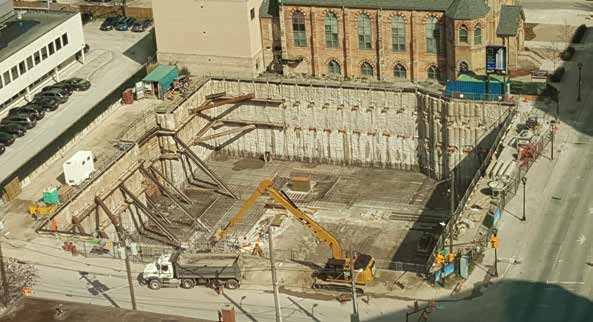

Aligning with the HCM group’s core value of sustainability, the Azure project became the first LEEDS condominium project in London’s history.
